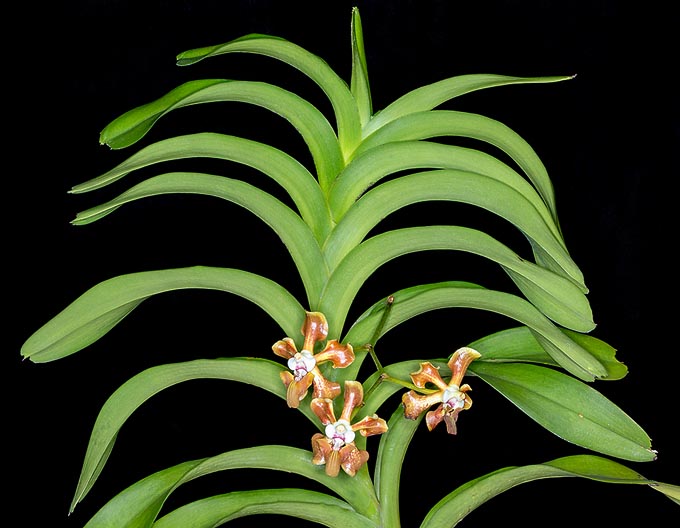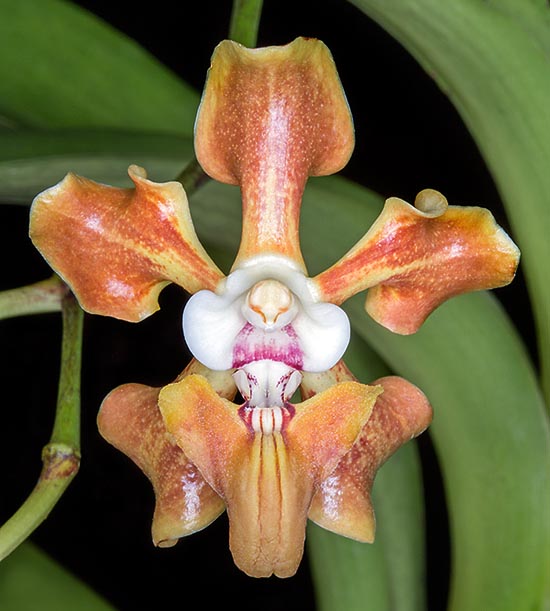Family : Orchidaceae

Text © Pietro Puccio

English translation by Mario Beltramini

Common in Bismarck Archipelago, Borneo, Java, New Guinea, Peninsular Malaysia and Sumatra but almost unknown in cultivation, Vanda helvola is a showy monopodial epiphyte with an about 1 m erect or sloping stem © Giuseppe Mazza
The name of the genus is the Sanskrit one of the Vanda tessellata; the specific name is the Latin adjective “helvolus, a, um” = brownish yellow, with reference to the colour of the flowers.
Common names: Borneo scented orchid (English).
The Vanda helvola Blume (1849) is a monopodial epiphytic species with erect or semi-drooping stem, up to more than 1 m long, wholly hidden by the imbricate foliar bases, from which depart robust and fleshy aerial roots.
The leaves are alternate, distichous, coriaceous, nastriform with bilobed and irregularly toothed apex, 15-25 cm long and 3-3,5 cm broad, of intense green colour.
Axillar racemose inflorescences, 10 cm long, bearing 3-5 flowers, fleshy, waxy and slightly fragrant, of about 5 cm of diameter, with oblong-spatulate sepals and petals with wavy margins, yellowish brown to purple brown, and trilobed labellum with arrow-shaped median lobe; in nature are present individuals of wholly greenish yellow colour.
It reproduces by seed, in vitro, and micropropagation. At amateur level it can reproduce dividing the stem in two portions provided each one of a sufficient number of leaves and roots, the upper part is to be treated as an adult plant, the lower one, placed in an ambient with high temperature and humidity, will produce from the dormant buds one or more plants that can be taken off as soon as they have formed their own rooting apparatus.

Splendid fleshy and waxy flowers, slightly scented, of about 5 cm © Giuseppe Mazza
Fertilizations every two weeks from spring to early autumn, monthly in winter, utilizing a preferably balanced hydrosoluble product, with microelements, at half the dosage suggested on the package.
It can be mounted on trunks, bark or rafts of cork or of arborescent ferns, or in pots with excellent drainage, to avoid dangerous water stagnations, or preferably in suspended baskets, in way to allow the roots to extend freely and to dry up quickly after the waterings and the nebulizations.
They can be positioned wit bare root, without any substratum, as well as with particularly draining and aerated compost that can be formed by medium/big sliced bark fragments and charcoal with possible addition of inerts.
The repottings are to be done when strictly necessary, at the vegetative restart, trying to damage the least possible the roots that are to be previously wetted in order to render them more flexible.
The species is reported in the appendix II of CITES (species whose trade is internationally ruled).
→ For general notions about ORCHIDACEAE please click here.
